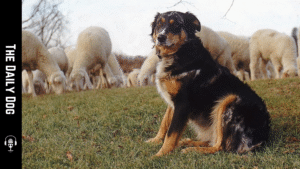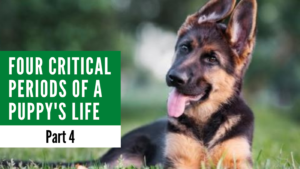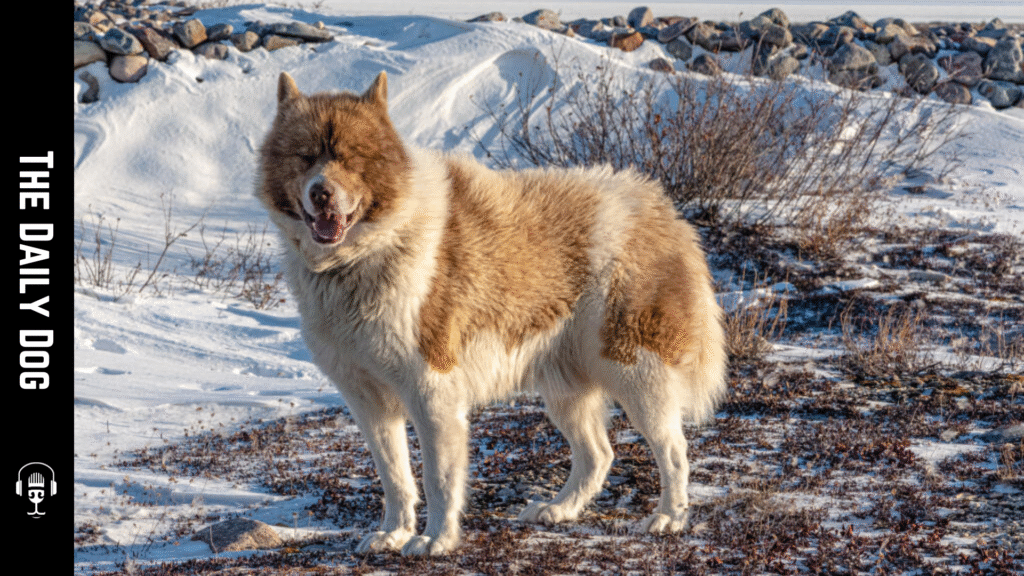The Canadian Eskimo Dog (CED) is more than a sled dog bred for cold climates. It is a living link to Indigenous heritage, a symbol of endurance, and a working partner whose needs and temperament reflect a long history of adaptation to some of the harshest landscapes on Earth. This breed’s rarity in the modern world only heightens the importance of understanding its distinctive lineage, exercise requirements, health concerns, and the ethical considerations that come with responsible ownership. In this article, we explore the Canadian Eskimo Dog in depth, from its origins among Inuit communities to contemporary care guidelines, breeding ethics, and preservation efforts that aim to safeguard its future.
Origins and heritage: a dogsled lineage rooted in survival
The Canadian Eskimo Dog’s story begins long before the modern kennel name appeared in records. Its ancestors traveled with Inuit people across the Arctic, hauling freight, pulling small boats, and assisting in hunting. These dogs were not pets; they were essential partners whose power, stamina, and keen sense of teamwork made life in the Arctic possible. Over countless generations, natural selection and deliberate breeding practices produced a dog capable of enduring long, punishing journeys across ice and snow, often under extreme weather conditions.
In the 20th century, the social and economic shifts that impacted Indigenous lifestyles also affected the CED. As motorized transport and new equipment became more prevalent, demand for traditional sled dogs declined in some regions. Coupled with external pressures on Arctic communities, the population of Canadian Eskimo Dogs dwindled, and the breed’s global recognition waned. Today, conservationists, Indigenous organizations, and dedicated breeders work to preserve the breed’s genetic diversity, cultural significance, and working capabilities. This commitment is not merely about maintaining a line of dogs; it is about safeguarding a living link to a traditional way of life and a set of skills honed over centuries.
Physical characteristics:
Strength, endurance, and a distinctive look Canadian Eskimo Dogs are medium to large in size, with a sturdy, muscular frame built for pulling. Males and females alike carry the physical power necessary for long treks pulling heavy loads. The double coat is a hallmark of the breed: a dense undercoat provides insulation in biting winds and frigid temperatures, while a weather-resistant outer coat sheds moisture and protects against snow and ice. Coat colors can vary, though many CEDs display light or white bases with darker markings. The eyes, expression, and overall presence of the dog speak to its confident yet calm temperament. The breed’s facial structure and neck strength support steady, efficient movement on uneven terrain, which is essential during multi-day sledding expeditions.
Temperament and social behavior: independence tempered by loyalty
The Canadian Eskimo Dog is known for its loyalty and resilience, paired with a healthy dose of independence. This is not a breed that thrives on constant, repetitive commands without purpose; rather, it responds best when given a clear role and meaningful tasks. Early socialization is crucial to ensure safe and positive interactions with people and other dogs. While many CEDs are reserved with strangers, they are rarely aggressive when raised in a stable and affectionate home environment. Their intelligence and problem-solving abilities are matched by a strong work ethic, which means training should be patient, consistent, and reinforced with positive reinforcement techniques.
Care and grooming: maintaining health in a demanding breed
The Canadian Eskimo Dog’s double coat requires dedicated grooming and routine checks. Regular brushing—at least weekly, with more frequent sessions during seasonal shedding, helps manage undercoat molt and keeps the coat healthy. Grooming is not limited to the fur; attention should be paid to paw pads, ears, and nails. Snow and ice can accumulate between paw pads, so owners should inspect for irritation or injury after outdoor activity. Nails should be trimmed regularly to maintain comfortable gait, especially for dogs that spend significant time on hard surfaces when they’re indoors.
Climate considerations are central to the CED’s care. While these dogs tolerate cooler climates with ease, hot and humid weather presents risks of heat stress.
Prospective owners in warmer regions should provide ample shade, wind or good air flow, constant access to water, and exercise during the cooler parts of the day. A dry, well-ventilated sleeping area helps maintain skin health and overall well-being. Diet and hydration, paired with the right exercise routine, support a healthy coat and robust energy for work and daily life.
Exercise and training: channels for energy and focus
Exercise is not optional for the Canadian Eskimo Dog; it is essential for physical health and mental well-being. A well-structured routine might include long daily walks, dedicated pulling drills, and varied activities that stimulate both body and mind. Given the breed’s instinct to pull and explore, enrichment activities that challenge problem-solving and coordination can prevent boredom and reduce the likelihood of unwanted behaviors.
Training should be grounded in positive reinforcement.
Early socialization, exposure to different people, dogs, environments, and sounds—helps the dog grow into a confident, balanced adult. Because of their independent streak, training sessions should be concise but frequent, with clear cues and rewards for desired behaviors. In addition to basic obedience, many owners incorporate pulling and conditioning work to align the dog’s natural abilities with safe and enjoyable tasks. A typical daily plan may include 60 to 90 minutes of structured exercise, plus opportunities for mental engagement in the form of scent work, obstacle courses, or staged sledding activities for multi-dog teams when appropriate.
Health, lifespan, and preventive care
Like all breeds, the Canadian Eskimo Dog benefits from regular veterinary care, vaccinations, dental hygiene, and parasite prevention. Lifespan is generally in the range of 10 to 12 years, with some individuals living longer under optimal care. Regular checkups help monitor hip and elbow health, dental status, and weight management. Because CEDs are built for endurance and heavy workloads, maintaining conditioning is important; poor conditioning can contribute to joint stress and other health issues over time.
Genetic diversity and inherited conditions are important considerations in responsible breeding. Prospective owners should seek breeders who perform health testing and provide transparent information about lineage. Rescue groups and Arctic-community organizations also play a key role in preserving health and welfare through careful screening, appropriate medical care, and socialization for dogs entering new homes.
Diet and nutrition: fueling endurance
A high-quality, well-balanced diet that supports activity levels is critical for the Canadian Eskimo Dog. Nutrition should be tailored to energy expenditure, body condition, and age. A diet rich in high-quality protein, healthy fats, and appropriate carbohydrates helps sustain stamina and coat health. Portion control is essential to prevent obesity, which can place additional strain on joints and heart health. Fresh water should always be available, and feeding schedules should be consistent to support digestion and training routines.
Treats can support training and bonding but should be used judiciously to avoid excessive caloric intake. Some owners prefer a mixture of premium commercial dog foods and well-chosen home-prepared meals, introduced gradually to avoid digestive upset. If a dog has allergies or special dietary needs, a veterinarian or canine nutritionist can tailor a plan that supports performance and well-being.
Living arrangements and family dynamics
The Canadian Eskimo Dog thrives in environments that honor its working heritage and social instincts. A secure yard, daily exercise, and a predictable routine help reduce anxiety and prevent destructive behaviors. The breed forms close bonds with its family and tends to do best with other dogs when properly socialized. Because of the dog’s independence and drive, a clear leadership approach and consistent boundaries are beneficial. Providing ongoing training and enrichment helps maintain a harmonious household where a CED can channel its energy into productive activities rather than frustration.
Breeding, rescue, and ethical considerations
The rarity of the Canadian Eskimo Dog adds complexity to breeding and adoption decisions. Prospective owners should prioritize reputable breeders who emphasize health testing, transparent lineage, and animal welfare. Ethical breeders screen for inherited conditions, ensure socialized puppies, and provide comprehensive guidance on care, exercise, and living arrangements in a modern home. Given the breed’s endangered status, rescue organizations and Arctic communities often collaborate to preserve bloodlines and place dogs in loving homes.
If you are drawn to a CED, consider rescue or adoption through groups connected to Arctic regions. Rescue dogs bring rich history and experience to a new home, but they may require a thoughtful adjustment period and ongoing socialization. Regardless of the path chosen, a long-term plan for veterinary care, training, and welfare is essential for a successful and humane partnership.
Preservation efforts and learning opportunities
Preserving the Canadian Eskimo Dog relies on collaboration among Indigenous communities, researchers, veterinarians, and breed enthusiasts. Genetic diversity remains a priority to minimize the risks associated with a narrow gene pool and to promote long-term health. Organizations and clubs dedicated to Arctic dog welfare support education, rescue, and responsible breeding initiatives. Engaging with these groups can connect potential owners with mentors, reputable breeders, and communities that cherish the breed’s heritage. For anyone interested in the breed’s story, ongoing conservation efforts—ranging from field research to community-led programs—offer valuable insights into Arctic life, canine genetics, and the responsibilities of ownership.
Why the Canadian Eskimo Dog matters today
The Canadian Eskimo Dog carries a powerful story of resilience, culture, and utility. It represents a tangible link to the Inuit way of life, a working partner that has endured extreme conditions, and a living reminder of the importance of preserving endangered breeds with unique histories. For families drawn to a loyal, capable sled dog, the CED offers companionship that blends athletic prowess with a calm, attentive nature. But owning one is a serious commitment that requires meaningful daily activity, careful welfare considerations, and a long-term plan for health, training, and humane care.
Getting started: considerations for prospective owners
If you’re contemplating adding a Canadian Eskimo Dog to your household, begin with honest assessments of your space, climate, and lifestyle. A cooler climate is naturally suited to the breed, but with thoughtful management, CEDs can adapt to a range of environments. Ensure you can provide ample daily exercise, mental enrichment, and consistent training. Seek out reputable breeders who prioritize health testing and clear communication about responsibilities, or connect with rescue organizations that specialize in Arctic dogs. Prepare to invest time in socialization, ongoing conditioning, and a partnership built on trust and respect.
In closing: embracing a storied breed with careful care
The Canadian Eskimo Dog is more than a historical artifact; it is a living, breathing partner capable of enduring long journeys, performing demanding tasks, and enriching a family’s life through loyalty and resilience. To honor the breed’s heritage, owners must commit to responsible care, regular veterinary oversight, and an appreciation for the dog’s unique needs. By supporting ethical breeding, rescue, and preservation efforts, enthusiasts help ensure that the Canadian Eskimo Dog remains a cherished part of Arctic culture and canine companionship for generations to come. If you’re prepared to enter into a bond built on patience, mutual respect, and shared endurance, a Canadian Eskimo Dog may become a remarkable member of your home and a vibrant ambassador for Arctic heritage.
We offer a FREE Strategy Call.
Click on the graphic to learn more
Read More

Cane di Oropa: The Italian Guardian with Quiet Dignity and Power









